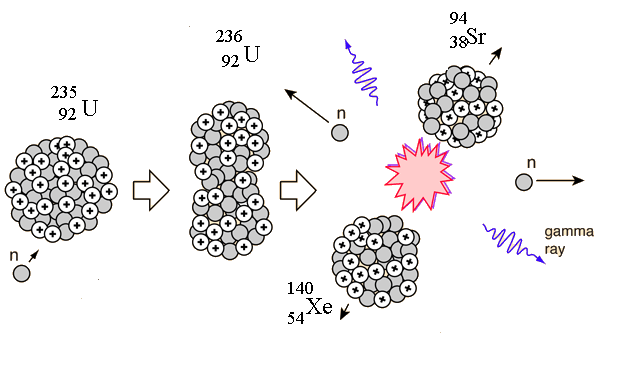Difference between revisions of "Monte Carlo Binary Collision Approximation"
Jump to navigation
Jump to search
(Created page with "When uranium-235 undergoes fission, the average of the fragment mass is about 118, but it is more probable that the pair will have an unequal distribution in mass. A common pa...") |
|||
| Line 1: | Line 1: | ||
When uranium-235 undergoes fission, the average of the fragment mass is about 118, but it is more probable that the pair will have an unequal distribution in mass. A common pair of fragments from uranium-235 fission is xenon and strontium: | When uranium-235 undergoes fission, the average of the fragment mass is about 118, but it is more probable that the pair will have an unequal distribution in mass. A common pair of fragments from uranium-235 fission is xenon and strontium: | ||
| + | |||
<center><math>^{235}U+n\rightarrow ^{236}U^{*} \rightarrow ^{140}Xe+^{94}Sr+2n</math></center> | <center><math>^{235}U+n\rightarrow ^{236}U^{*} \rightarrow ^{140}Xe+^{94}Sr+2n</math></center> | ||
| Line 5: | Line 6: | ||
[[File:U235_fission_Xe_Sr.png]] | [[File:U235_fission_Xe_Sr.png]] | ||
| + | |||
| + | [[File:U235_fission_Xe_Sr.png|"thumb"|"border"|"center"|"middle"|"upright"|||page=Page||Figure 1: Typical Uranium 235 fission fragments Xenon and Strontium. ]] | ||
